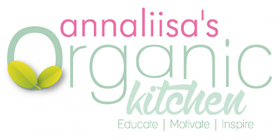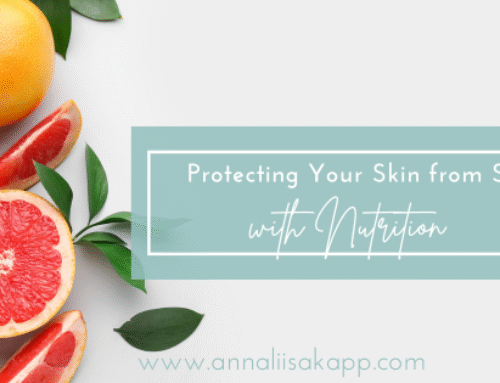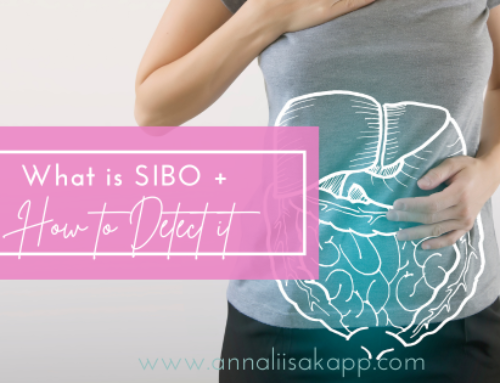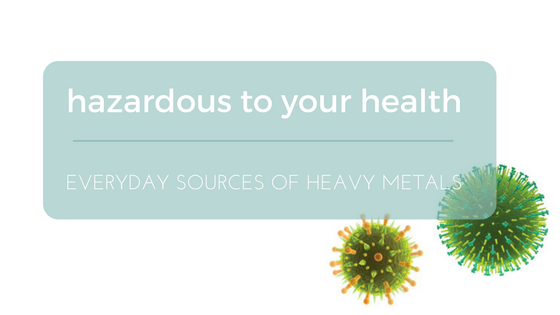
When you hear the term, heavy metals, you probably think of some poor soul who is working away in a toxic environment. Maybe a coal mine worker, industrial factory laborer, or something of that nature.
Unfortunately, every single one of us is exposed to heavy metals on a daily basis. I wrote a blog about the top 12 toxic chemicals in your beauty products awhile ago, but this time I wanted to shed the light specifically on heavy metals because they have a significant impact on our health.
Heavy metals that we are exposed to include lead, mercury, cadmium, arsenic, nickel, and aluminum. Sources of heavy metals are more common than one might think and include pesticide sprays, cooking utensils, tin cans, cigarette smoke, mercury dental fillings, contaminated fish, cosmetics, antacids, pharmaceuticals, vaccines, water, and cookware. Industrial processes and gasoline contribute to lead in the atmosphere, which ends up in food crops, water and soil.
What’s more, heavy metals like aluminum can impair your body’s ability to excrete toxins by impeding your glutathione production. Glutathione is your most important intracellular detoxifier, required for reversing oxidative stress. Some individuals who may be even more at high risk include: battery makers, miners, gasoline station attendants, printers, roofers, solderers, dentists, and jewelers.
If you suspect that you may have symptoms of heavy metal toxicity, then doing a hair mineral analysis is a good screening test available through healthcare practitioners.
How do you know if your body is over burdened with heavy metal toxicity? Other than doing a hair mineral analysis, you can start to connecting the dots by listening to your body’s symptoms.
Symptoms of heavy metal toxicity:
- Headache
- Fatigue
- Muscle pains
- Indigestion
- Tremors
- Constipation
- Anemia
- Pallor
- Dizziness
- Poor coordination
- Impaired ability to concentrate
- Childhood learning disabilities (esp. from lead)
- Candida
What can we do to reduce our toxic load?
Although there are sources of heavy metals in the atmosphere that are difficult to avoid, there are ways we can reduce our intake on a daily basis as well as doing at least a few weeks of detoxifying each year. Great times for a cleanse are spring and fall.
1. Choose organic whole foods more often
Buy and eat organic foods as much as possible to reduce exposure to pesticides and herbicide which can be sources of heavy metals. If buying organic foods is not available to you have a look at the Dirty Dozen list and avoid the most heavily sprayed produce and eat lower on the food chain. You can find a valuable list of Give your produce a bath using 2-3 Tbsp apple cider vinegar and 1 tsp salt to remove some chemical residues.
2. Make wiser seafood choices
Seafood offers benefits of heart and brain healthy omega 3 fatty acids and protein, but with the conditions of our oceans we must make wise choices to avoid heavy metals like mercury. You can find a very helpful guide by theEnvironmental Working Group, which takes into consideration not only toxicity levels but sustainability as well.
- Top choices include sardines, wild salmon, mussels, rainbow trout and Atlantic mackerel.
- Top seafood choices to avoid include west coast oysters (high cadmium levels), shark, swordfish, tilefish, king mackerel, marlin, bluefin and bigeye tuna steaks or sushi, and orange roughy. FIND THE SEAFOOD SAFETY GUIDE HERE
3. Drink filtered water
Tap water can include many hazardous chemicals, heavy metals, pesticides, dioxin, perchlorate, a chemical which has been shown to reduce thyroid hormone, fluoride, chlorine, ammonia, and microorganisms like bacteria, parasites and viruses. Depending on where you live, lead from piping could be a concern. Another concerns with tap water is the residue from pharmaceutical drugs and birth control pills. Your best bet is to avoid those plastic water bottles and opt for glass or high quality stainless steel bottles and invest in a water filtration system. They range from just over a $100 for a dual carbon filter to over $400 for a reverse osmosis filtration system. Both are great, just depends on what you are looking for.
4. Use non-toxic cookware and utensils
The enzymes in food, raw or cooked, are very chemically active and react with the metallic ions in the metal cookware. This can make the food as toxic as the cookware that it’s cooked with. Perfluorocarbons (PFCs) are chemicals that are used to repel water, grease and stains and are found in non-stick cookware, clothing, carpeting, furniture and food containers. Our bodies absorb PFCs through food, our skin and via fumes from overheated pans. These chemicals are linked with liver damage, developmental problems, thyroid dysfunction and cancer.
Here is what to avoid:
- Aluminum, in cookware and foil
- Poor-quality stainless steel
- Thin enamel on flimsy pots
- Teflon
- Cookware coated with synthetic materials
5. Read personal care product labels
Next time you slather on your lotion or lather up in the shower, take a moment to read the label. Chemical laced products can be a source of heavy metals, xenoestrogens (chemicals that resemble and displace estrogen in the body), endocrine disruptors and cancer causing agents. 95% of chemicals used in fragrances, found in almost all personal care products, are synthetic compounds derived from petroleum. They include benzene derivatives, aldehydes and many other known toxins and sensitizers – capable of causing cancer, birth defects, central nervous system disorders and allergic reactions.
Tips to avoid these chemicals:
- Buy phthalate-free cosmetics, nail polish
- Use paraben free cosmetics
- Use natural paper products and tampons to avoid dioxin
- Look for fragrance free products (perfume)
- Use fluoride free toothpaste
- Use aluminum free deodorant
I know it may seem like an overwhelming overhaul thinking about everything you need to do to limit your exposure. Change doesn’t happen over night, as they say, so commit to one action step you want to take to move toward a healthier lifestyle. Put it into your to do list and get ‘er done!
Annaliisa Xx
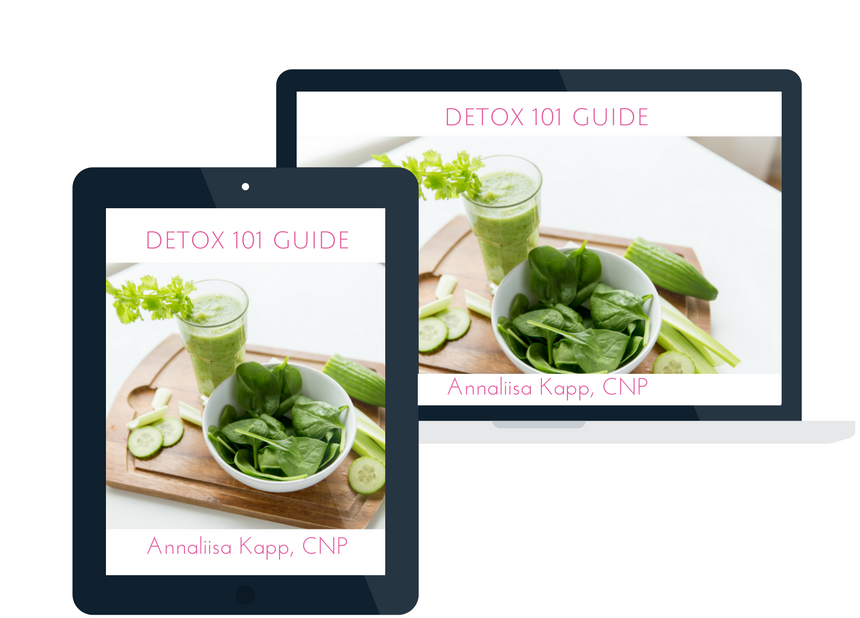 Could you benefit from a cleanse? Download my free Detox 101 Guide ~ what anyone thinking about doing a cleanse ought to know. DOWNLOAD YOUR GUIDE HERE.
Could you benefit from a cleanse? Download my free Detox 101 Guide ~ what anyone thinking about doing a cleanse ought to know. DOWNLOAD YOUR GUIDE HERE.
In this guide, I explain who should and shouldn’t do a cleanse, how to choose the right detox plan for you, and how to avoid the top sources of toxins.
Enjoy, and happy cleansing!
